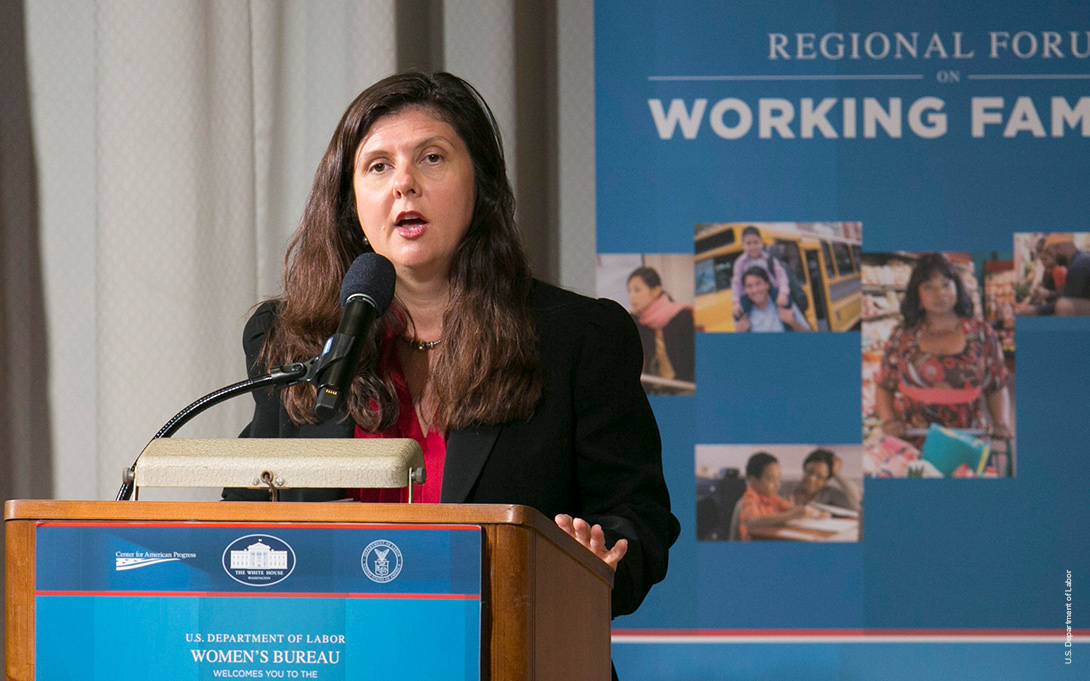
Ford School economist Betsey Stevenson, a leading voice on the COVID-19 “she-cession,” discusses her work and her academic passion.
State & Hill: What inspired you to study and spend so much of your career focusing on women in the labor market?
Betsey Stevenson: I have always been interested in the porous boundaries between professional work lives and our personal lives. It’s clear that our work lives shape the choices we make in our personal lives and our personal lives shape the choices we make in our work lives. That complicated relationship became even clearer during COVID when many people found the boundaries they had tried to set up between various parts of their lives came tumbling down.
This pandemic has exposed gender inequity in a striking way, which has garnered much attention in the media. Do you think the attention will lead to real change?
It has been clear for decades that the United States needed to adapt its attitudes towards parents, children, and work. Our workplace policies—both those set by government and those set by employers—were designed for a time when most families had a person dedicated to doing home production. The role model household for much of the 20th century involved the full-time market labor of one person and the uncompensated, but highly beneficial, labor of another. And yet here we are 50 years since women upended that model of households by entering the labor force in droves in the 1970s and we still do not have the basic public policy infrastructure of paid family leave, paid sick leave, and affordable high quality early childhood education. The failure to adapt and adopt policies that help working families thrive is holding the U.S. economy back. It’s doing so both by underinvesting in children and by forcing families to make trade-offs between work and family that they shouldn’t have to make. While this problem has been recognized and studied for many years, the pandemic has shone a light on it that will hopefully provide the impetus for change.
The Biden Administration’s first signature achievement was the passage of the American Rescue Plan Act. Did it go far enough to address some of the equity issues you have been discussing, to expand opportunity for women in the workforce?
The American Rescue Plan is needed to help put food on people’s tables and get the economy back on track. The focus was on helping the economy recover from the pandemic as quickly as possible and addressing the disparate impact of the pandemic. However, it is not the kind of structural reform that we need. We need a federally financed paid medical and family leave program. We need guaranteed paid sick leave. And we need permanent policy changes to reduce childhood poverty. More recently the Biden-Harris administration released the American Families plan which is a set of policy proposals designed to address the needs of families in the 21st century and to make it possible for parents to more easily balance success in the workforce with their caregiving responsibilities at home. That package includes more support for child care, paid family leave, and a host of other policy proposals designed to provide greater support for children and their families.
How do you think this pandemic and economic downturn will impact young women into the future? What is your advice to them?
I worry that they will be scared and that family life and work life all looks too hard. When the pandemic first hit people joked that we’d end up with really high fertility rates given all the time people were spending at home. The reality was that fertility has continued to decline. It's possible that the pandemic and the economic downturn will lead some women to have fewer children than they otherwise would have had. On the work front, it is possible that younger women will look up and see fewer women breaking glass ceilings and sticking with high-level positions and find that they have fewer mentors. Women’s labor force participation dramatically declined following the pandemic—to rates not seen since the 1980s—and that shift may serve as a discouragement for young women for a long time.
Yet, it is important to remember that the labor force participation rate of women with young children hit an all-time high in 2019. Women have more education than men and have eliminated experience gaps with men. Prior to the pandemic women held the majority of jobs in the U.S. economy. So my advice to women is to realize that they have a lot to offer to employers and employers cannot afford to lose them. And my second piece of advice is to realize that there is power in numbers. So many women have been afraid to take time out of the labor force or to demand maternity leave or to insist on a flexible schedule because they thought that it would indicate their lack of commitment to the job. The pandemic caused lots of women to make choices between their families and their livelihoods. But there is power in numbers. With so many women with gaps on their resumes or who postponed a promotion, employers won’t be able to afford to overlook such women.
Women can demand more from employers, particularly if they join together and push their colleagues to join in on demanding family friendly work environments.
Our lives and our livelihoods should work in harmony not in conflict. So whether you have kids or elderly parents or a new puppy that needs some of your focus, prioritize all the ways in which your time has value to you. That way you can allocate your efforts across your paid and unpaid labor and your leisure.
Below, find the full, formatted Spring 2021 edition of State & Hill.
